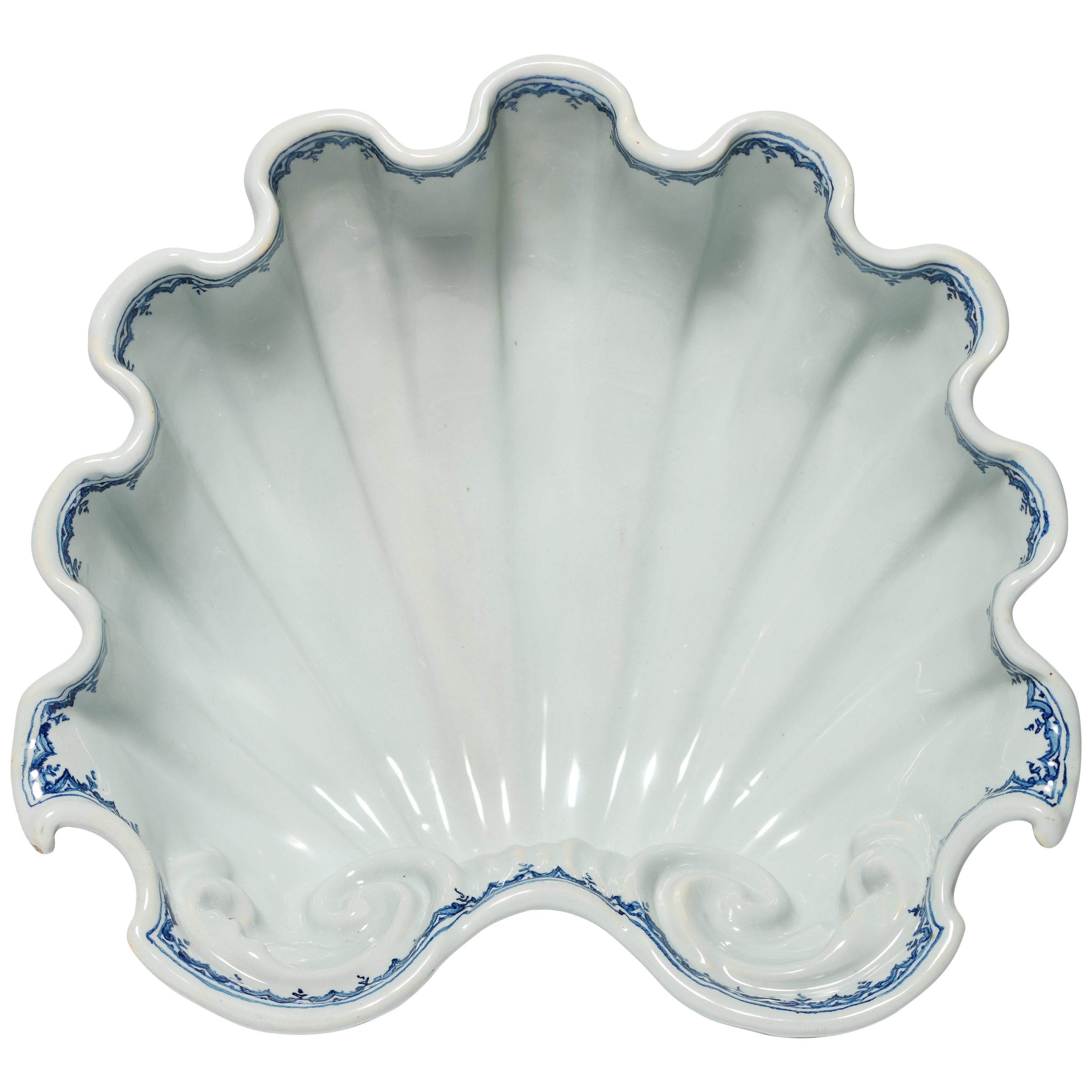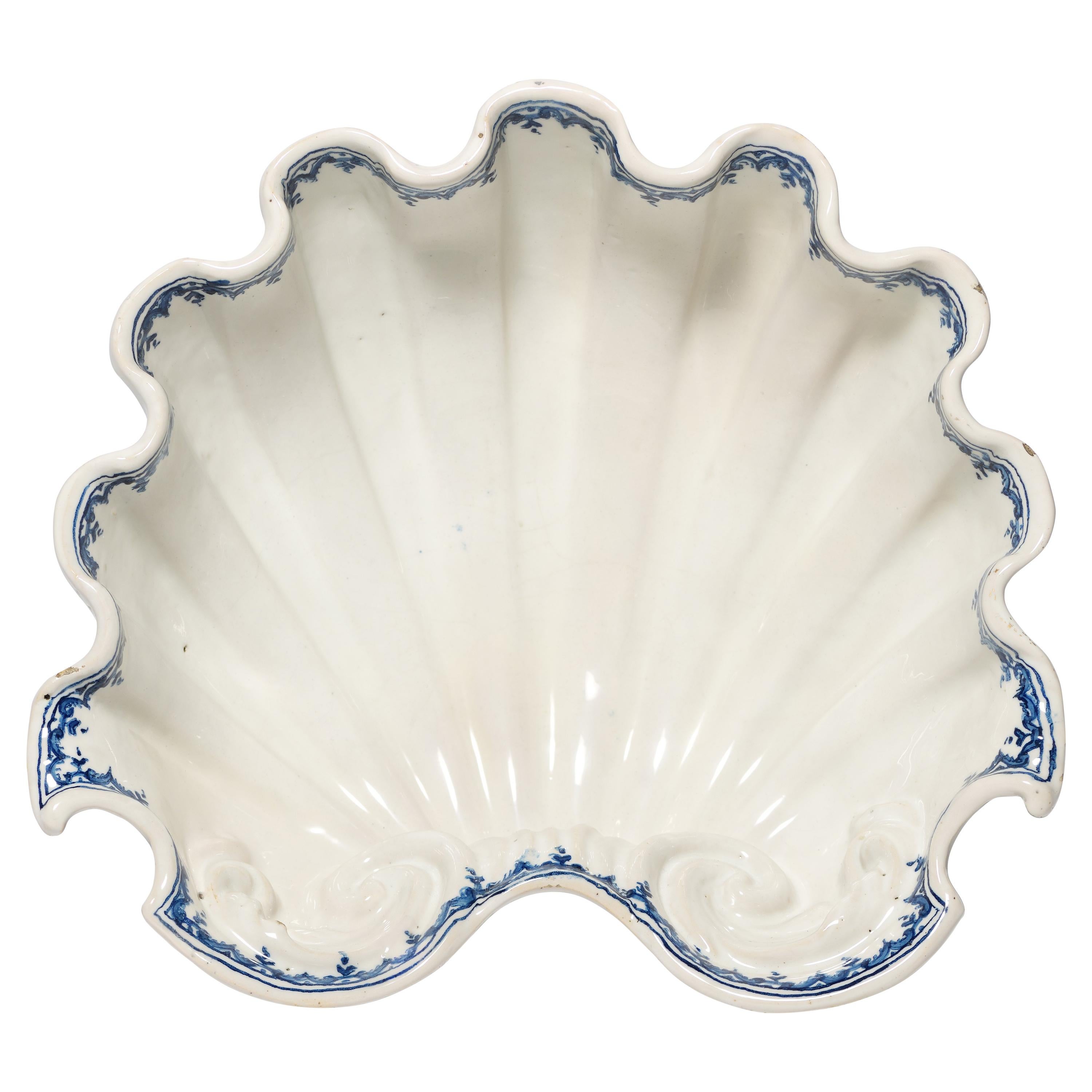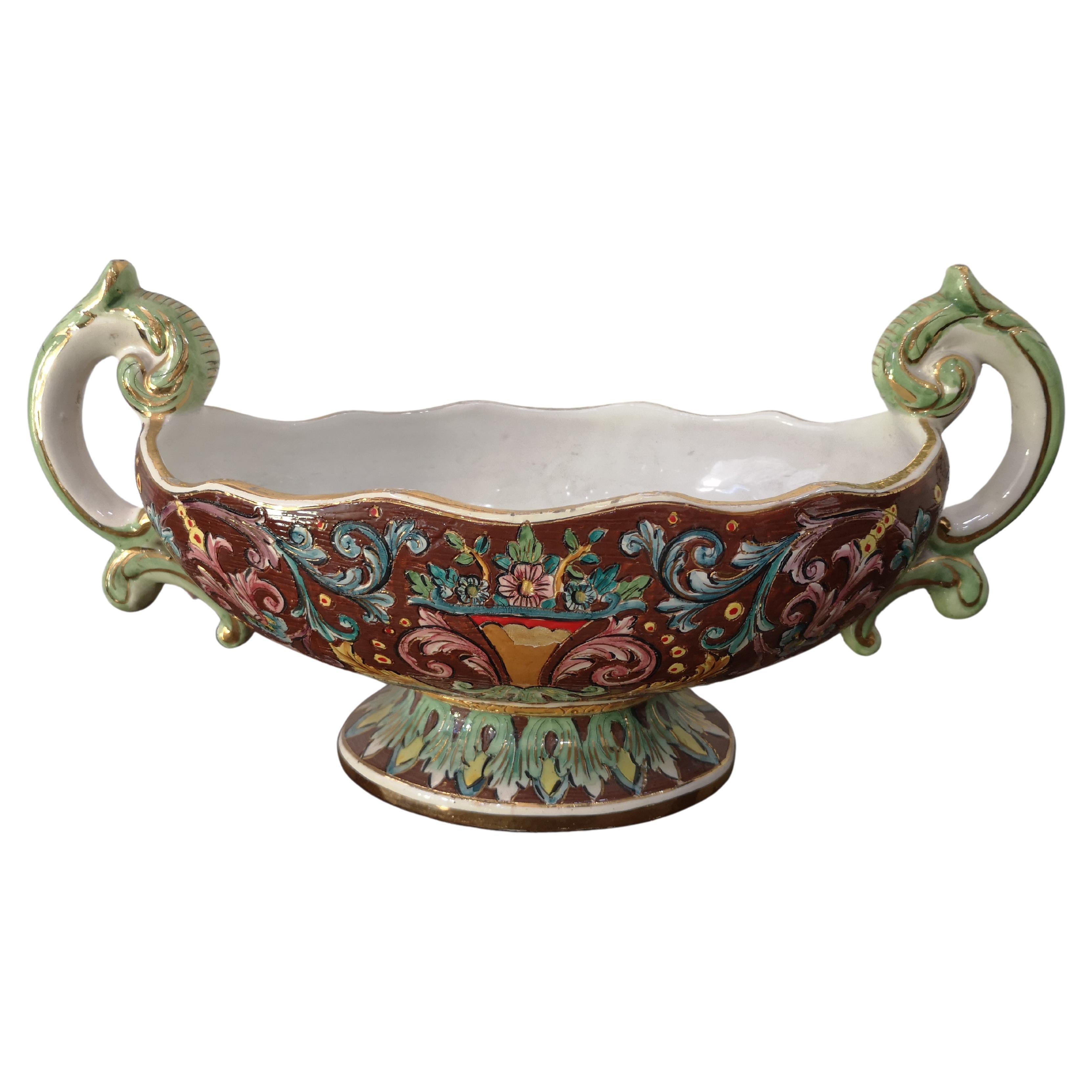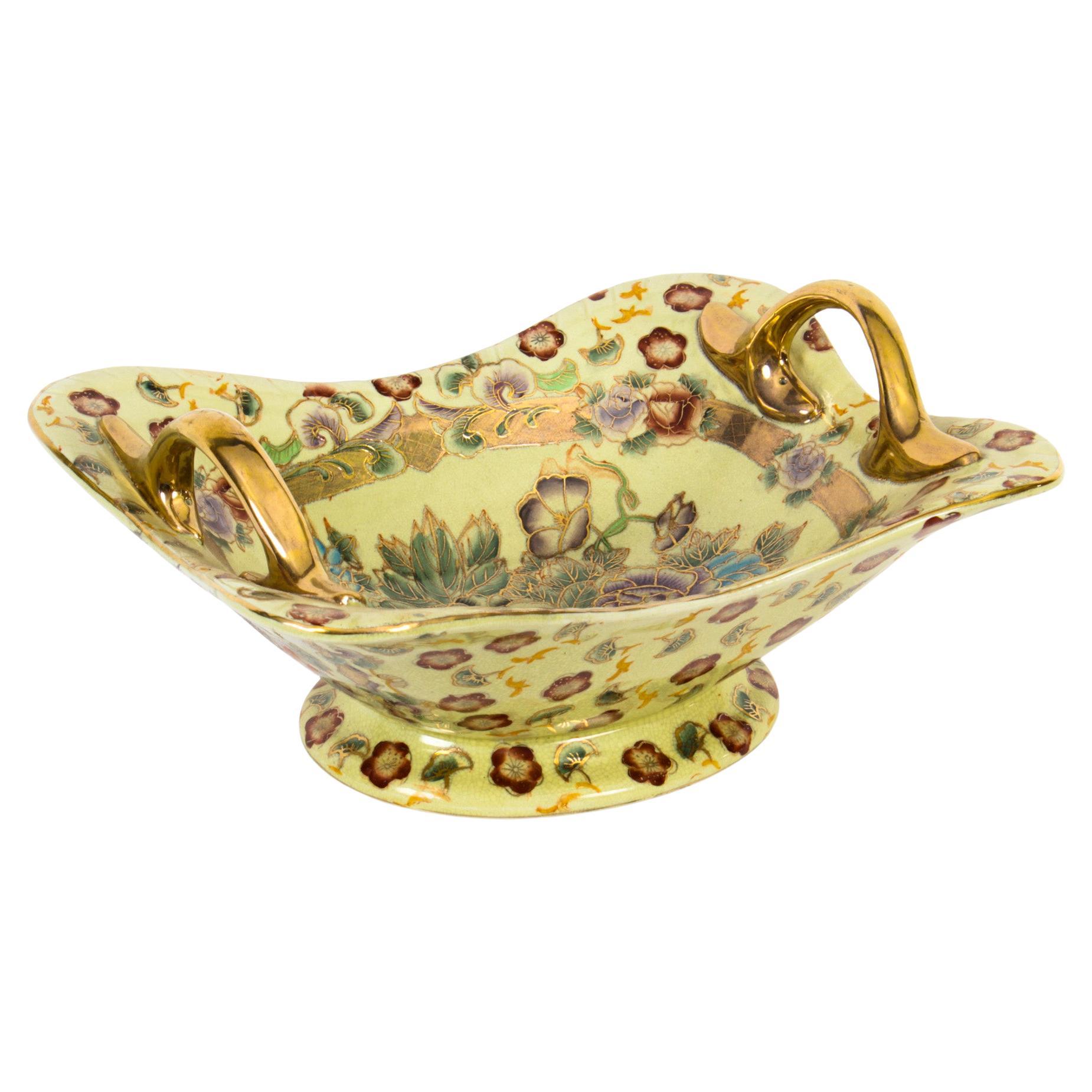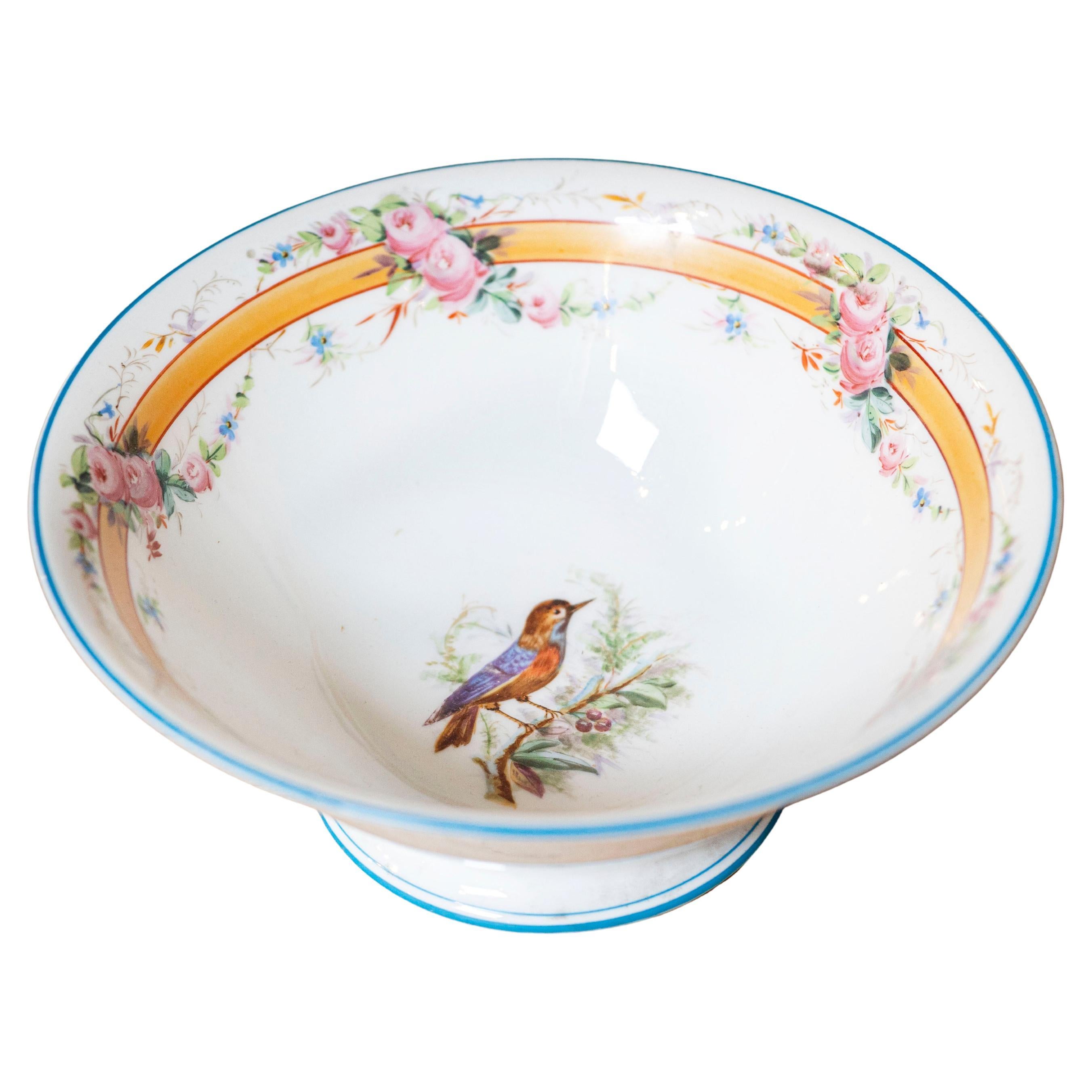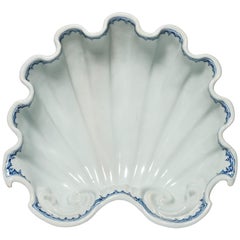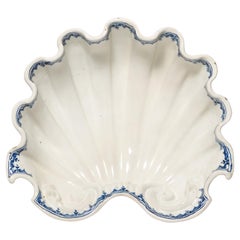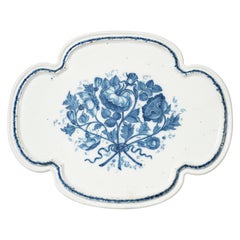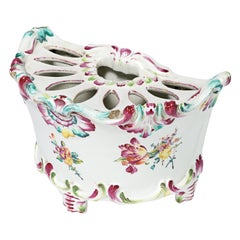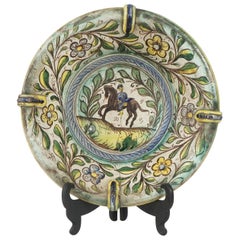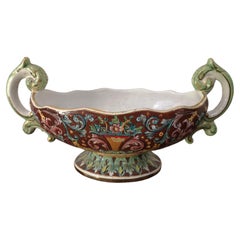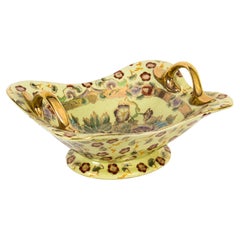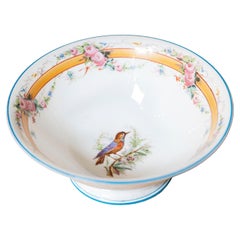Items Similar to Ancient Italian Renaissance Maiolica Crespina, Faenza, 1580 Circa
Video Loading
Want more images or videos?
Request additional images or videos from the seller
1 of 17
Ancient Italian Renaissance Maiolica Crespina, Faenza, 1580 Circa
$2,995.36
£2,229.85
€2,500
CA$4,102.89
A$4,563.31
CHF 2,382.82
MX$55,530.66
NOK 30,432.25
SEK 28,540.08
DKK 19,031.63
Shipping
Retrieving quote...The 1stDibs Promise:
Authenticity Guarantee,
Money-Back Guarantee,
24-Hour Cancellation
About the Item
Crespina
Faenza, last quarter of the 16th century
Maiolica painted in two colors, light blue and yellow, on a thick, rich layer of white enamel.
It measures 2.24 in (5.7 cm) in height, 6.10 in (15.5 cm) in diameter.
lb 0.55 (kg 0.25)
State of conservation: mimetic restoration.
The small cup has a raised central “umbone”, a perforated brim and a shaped rim. It rests on a high jutting foot. The "crespina" shape, in some inventories is cited as "tacce de frute" (fruit cups). It was particularly appreciated in the Renaissance and has variants based on the formal types and the different sizes. The decoration, made according to the dictates of the “compendiario” style, used few standardized colors: blue and yellow on a thick white and shiny enamel, deliberately chosen as the colour which was most reminiscent of silver. This choice derived from a trend in creative design of the era: the shapes used in the molds were often taken from metal objects. An idea which would last throughout the Renaissance.
The work shows, in the middle of the “umbone”, a winged putto stepping forward while playing a long thin trumpet.
The depiction of the putto is fully representative of the repertoire of the Faenza workshops of the sixteenth century.
Some specimens with this type of decoration have been published in a volume by Carmen Ravanelli Guidotti: there appears the whole productive repertoire of this fundamental moment of transition between the taste for the “istoriato” style and the great simplification of decoration in the “compendiario” period. This style, in its simplicity, however, saw its expression in a rather varied collection of decorative subjects, including old-fashioned busts, cupids, warrior figures, as well as “istoriato” representations, albeit done in simpler colour tones.
Bibliography: Ravanelli Guidotti C., Faenza-Faïence ‘Bianchi’ di Faenza. Catalogo della mostra, Museo Internazionale delle Ceramiche, Faenza. Ferrara 1996, pp. 110 and 114.
- Dimensions:Height: 2.25 in (5.7 cm)Diameter: 6.11 in (15.5 cm)
- Style:Renaissance (Of the Period)
- Materials and Techniques:Maiolica,Painted
- Place of Origin:
- Period:
- Date of Manufacture:circa 1580
- Condition:Repaired: Mimetic restoration. Minor structural damages. Minor fading. Mimetic restoration.
- Seller Location:Milano, IT
- Reference Number:1stDibs: LU4352214566251
About the Seller
4.3
Vetted Professional Seller
Every seller passes strict standards for authenticity and reliability
Established in 1860
1stDibs seller since 2018
21 sales on 1stDibs
Associations
International Confederation of Art and Antique Dealers' Associations
- ShippingRetrieving quote...Shipping from: Milano, Italy
- Return Policy
Authenticity Guarantee
In the unlikely event there’s an issue with an item’s authenticity, contact us within 1 year for a full refund. DetailsMoney-Back Guarantee
If your item is not as described, is damaged in transit, or does not arrive, contact us within 7 days for a full refund. Details24-Hour Cancellation
You have a 24-hour grace period in which to reconsider your purchase, with no questions asked.Vetted Professional Sellers
Our world-class sellers must adhere to strict standards for service and quality, maintaining the integrity of our listings.Price-Match Guarantee
If you find that a seller listed the same item for a lower price elsewhere, we’ll match it.Trusted Global Delivery
Our best-in-class carrier network provides specialized shipping options worldwide, including custom delivery.More From This Seller
View AllAncient Italian Maiolica Faenza, Ferniani Factory, Circa 1700
By Ferniani Factory
Located in Milano, IT
Centerpiece light blue maiolica shell
Ferniani factory, early period: 1693-1776
Faenza, 1700 circa
5.5 in x 14.72 in x 13.77 in (14 cm x 37.4 cm X cm 35)
lb 4.40 (kg 2)
State of con...
Category
Antique Early 1700s Italian Baroque Ceramics
Materials
Maiolica
Ancient Italian Maiolica Faenza, Ferniani Factory, Circa 1700
By Ferniani Factory
Located in Milano, IT
Centerpiece white maiolica shell
Ferniani factory, early period: 1693-1776
Faenza, circa 1700
Measures: 5.6 in x 14.72 in x 13.46 in (14.3 cm x 37.4...
Category
Antique Early 1700s Italian Baroque Ceramics
Materials
Maiolica
18th Century Italian Maiolica Centerpiece Bassano Venice, circa 1750
Located in Milano, IT
Maiolica centerpiece
Pasquale Antonibon factory
Nove di Bassano, Venice, 1740-1770.
Measures: 1.85 in x 19.21 in x 15.27 in
4.7 cm X 48.8 cm X 38.8 cm.
lb 5.29 (kg 2.4)
State of conservation: thin passing fêlure with covered chipping and a glued foot
The Antonibon were an important family of Venetian...
Category
Antique 1750s Italian Baroque Ceramics
Materials
Maiolica
Rococo Italian Maiolica Flower Pot Pasquale Rubati, Milano, 1770 circa
By Pasquale Rubati
Located in Milano, IT
Maiolica flower pot “a mezzaluna” with support feet
decorated with little bunches of flowers
Pasquale Rubati Factory
Milan, circa 1770
5.5 in X ...
Category
Antique 1770s Italian Rococo Ceramics
Materials
Maiolica
Ancient Maiolica Cup, Rubati Manufacture, Milan, Circa 1770 - 1780
By Pasquale Rubati
Located in Milano, IT
Sick cup
Pasquale Rubati Manufacture
Milan, Circa 1770 - 1780
Maiolica decorated in polychrome “a piccolo fuoco” (third fire)
It measures: h 2.36 x 7.4 x 7.87 (h 6 x 19 x 20 cm)
...
Category
Antique 1770s Italian Rococo Ceramics
Materials
Maiolica
Ancient Maiolica Flower Pot Pasquale Rubati Factory, Milan Circa 1770
By Pasquale Rubati
Located in Milano, IT
Maiolica flower pot “a mezzaluna” decorated with tulip
Pasquale Rubati Factory
Milan, circa 1770.
Measures: 4.7 in x 4.7 in x 8.6 in
12 cm x 12...
Category
Antique 1770s Italian Rococo Ceramics
Materials
Maiolica
You May Also Like
Late 17th-Early 18th Century Italian Majolica Bowl
Located in Hudson, NY
This good sized bowl is a great example of the majolica wares produced in Italy throughout the 15th, 16th, 17, and 18th centuries. Humble and simple but highly decorative and enterta...
Category
Antique Early 18th Century Italian Pottery
Materials
Majolica
Centrotavola ceramica Deruta anni 30
By Deruta
Located in Catania, IT
Centrotavola ceramica Deruta anni 30
in ottime condizioni senza nessuna imperfezione.
Misura:
Lunghezza 42 cm
Larghezza 20 cm
Altezza 21 cm
Spedizione accurata.
Category
Vintage 1930s Centerpieces
Materials
Ceramic
Vintage Chinese Porcelain Bowl, Mid-20th Century
Located in London, GB
This is a lovely porcelain bowl, mid-20th century in date.
The shaped oval bowl features a pair of gilt handles and is beautifully painted with a cream ground and brightly colour...
Category
Vintage 1950s Chinese Porcelain
Materials
Porcelain
19th Century French Porcelain
Located in Atlanta, GA
This 19th-century French porcelain piece is a finely crafted example of the decorative artistry of the time, likely influenced by the Rococo Revival or Neoclassical styles that were ...
Category
Antique 19th Century French Rococo Revival Porcelain
Materials
Porcelain
French Faience Jardiniere Desvres, circa 1900
By Desvres
Located in Austin, TX
French Desvres faience jardinière painted with flowers, circa 1900. Marked on base.
Minor wear.
Category
Antique Early 1900s French French Provincial Planters, Cachepots and Jar...
Materials
Faience
18th Century Italian Berrettino Majolica Faience Riser
Located in Milano, MI
An Italian maiolica berrettino-ground riser from 18th century, central Italy, probably Faenza origin. In the central part of the riser a ruined tower is painted within a mountain lan...
Category
Antique Mid-18th Century Italian Rococo Decorative Dishes and Vide-Poche
Materials
Maiolica
More Ways To Browse
Italian Ceramics White
Ancient Cup
Ancient Cups
Faenza Italian Ceramics
Antique Italian Faience
Italian Maiolica
Renaissance Cups
Cupid Enamelled
16th Century Italian Ceramics
Renaissance Maiolica
16th Century Maiolica
Antique Majolica Plate
Terracotta Plates
Mason Ironstone 19th Century
Ceramic Vegetables
Minton Majolica
Italian Maiolica
Ceramic Apple
